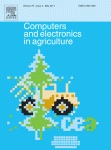Improving predictive performance on survival in dairy cattle using an ensemble learning approach
Abstract
Cow survival is a complex trait that combines traits like milk production, fertility, health and environmental factors such as farm management. This complexity makes survival difficult to predict accurately. This is probably the reason why few studies attempted to address this problem and no studies are published that use ensemble methods for this purpose. We explored if we could improve prediction of cow survival to second lactation, when predicted at five different moments in a cow’s life, by combining the predictions of multiple (weak) methods in an ensemble method. We tested four ensemble methods: majority voting rule, multiple logistic regression, random forest and naive Bayes. Precision, recall, balanced accuracy, area under the curve (AUC) and gains in proportion of surviving cows in a scenario where the best 50% were selected were used to evaluate the ensemble model performance. We also calculated correlations between the ensemble models and obtained McNemar’s test statistics. We compared the performance of the ensemble methods against those of the individual methods. We also tested if there was a difference in performance metrics when continuous (from 0 to 1) and binary (0 or 1) prediction outcomes were used. In general, using continuous prediction output resulted in higher performance metrics than binary ones. AUCs for models ranged from 0.561 to 0.731, with generally increasing performance at moments later in life. Precision, AUC and balanced accuracy values improved significantly for the naive Bayes and multiple logistic regression ensembles in at least one data set, although performance metrics did remain low overall. The multiple logistic regression ensemble method resulted in equal or better precision, AUC, balanced accuracy and proportion of animals surviving on all datasets and was significantly different from the other ensembles in three out of five moments. The random forest ensemble method resulted in the least significant improvement over the individual methods.
Download full text in pdf format
 Published as:
Published as:
E.M.M. van der Heide,
C. Kamphuis,
R.F. Veerkamp,
I. N. Athanasiadis,
G.Azzopardi,
M.L. van Pelt,
B.J. Ducro,
Improving predictive performance on survival in dairy cattle using an ensemble learning approach,
Computers and Electronics in Agriculture, 177:105675,
2020, doi:10.1016/j.compag.2020.105675.
You might also enjoy (View all publications)
- Domain adaptation with transfer learning for pasture digital twins
- Causality and Explainability for Trustworthy Integrated Pest Management
- Breeding Programs Optimization with Reinforcement Learning
